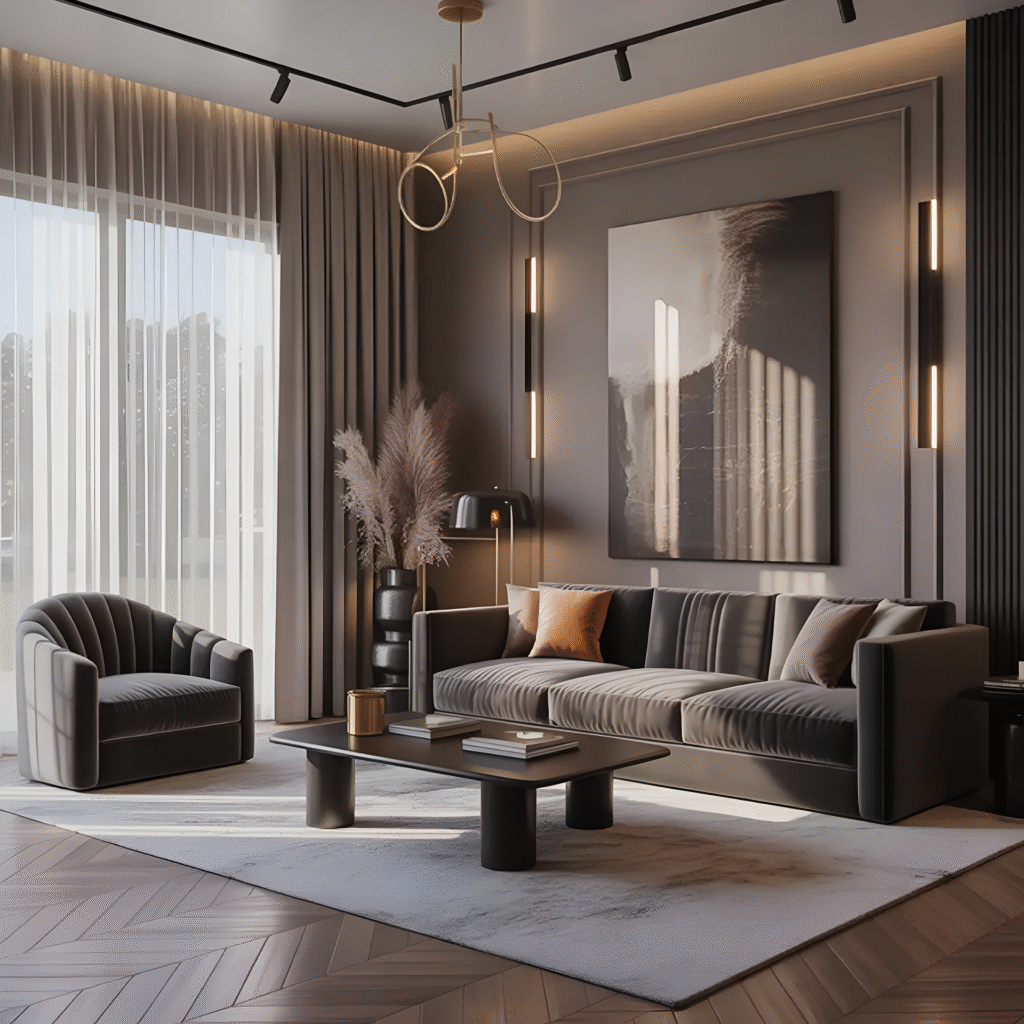Have you ever stepped into a modern home in Dubai and felt the charm of tradition beautifully woven into every corner? That’s the magic of Arabic design — rich, detailed, and deeply rooted in culture, yet perfectly suited to today’s contemporary lifestyles. Today, an experienced interior designer can blend age-old patterns, arches, and craftsmanship with sleek modern elements to create homes that feel both luxurious and welcoming. This approach even extends to bespoke kitchens, where tradition meets function most elegantly.
The Soul of Arabic Design
Arabic design has always been about harmony, geometry, and storytelling. It is more than just a style — it reflects a way of living that values beauty, comfort, and connection. From intricately carved wood panels to arched doorways and patterned tiles, every element has meaning. In today’s world, homeowners still crave that timeless Arabic charm but prefer lighter tones, open layouts, and modern finishes. This is where the art of mixing traditional and contemporary truly shines.
Patterns and Motifs that Tell a Story
Arabic motifs are among the most recognizable in the world. They include geometric shapes, arabesque patterns, and calligraphic art. Each design tells a story of balance and perfection. When introduced subtly into modern homes, these motifs bring texture and personality without overpowering the space. A wall panel with delicate carvings or a mirror frame featuring these motifs can turn a simple corner into a visual masterpiece. This thoughtful use of Arabic motifs in Dubai homes creates a bridge between old-world charm and modern simplicity.
Materials that Bring Warmth
Traditional Arabic interiors were known for natural materials — wood, stone, brass, and handmade tiles. Modern interpretations of Arabic design continue to celebrate these materials but in a fresher way. For example, instead of dark heavy woods, lighter finishes or polished surfaces are used. Brass details in light fixtures or furniture handles bring a hint of golden warmth without making the room feel dated. Natural fabrics such as cotton and linen add comfort and texture while keeping the look clean and airy.
Arches, Niches, and Curves
One of the most distinctive Arabic architectural elements is the arch. Whether used in doors, windows, or hallways, arches soften the structure of a home and create an inviting flow. In contemporary spaces, these arches are reimagined with minimalist lines and neutral tones. Niche walls or alcoves — often used to display art or lighting — continue to be a strong feature of Arabic-inspired interiors. These subtle details keep the traditional aesthetic alive without compromising on modern comfort.
Color Palette: From Desert Sands to Ocean Blues
Arabic design draws inspiration from nature — the warmth of the desert, the blues of the sky, and the greens of palm trees. In modern interiors, these tones are muted for a more refined look. Think beige, ivory, sand, and taupe paired with accents of gold or turquoise. This palette adds calmness and balance, making the space feel cozy and serene. A professional interior designer knows how to layer these tones perfectly to achieve a sense of depth and harmony throughout the home.
Lighting: The Glow of Tradition
Lighting plays a powerful role in Arabic interiors. Traditional homes often used ornate lanterns made of metal and colored glass. In modern spaces, designers reinterpret these forms into pendant lamps or wall lights that cast intricate patterns of light and shadow. These lighting designs create an inviting and cozy atmosphere, ideal for Dubai’s elegant residential spaces. Whether over a dining table or in a hallway, this lighting instantly adds cultural charm to any room.
Arabic Design in Modern Kitchens
One of the most exciting trends today is the evolution of arabic design in Dubai kitchens. Modern kitchens inspired by Arabic aesthetics combine functionality with elegance. Mosaic tiles with subtle geometric designs, brass handles, and arched cabinet doors can turn a simple kitchen into a stunning statement space. Bespoke kitchens allow homeowners to customize every detail — from countertop materials to cabinetry finishes — ensuring that the design reflects their personality while maintaining Arabic influences. This balance of tradition and practicality makes these kitchens both functional and beautiful.
Furniture that Blends Old and New
Furniture design is another area where traditional Arabic style meets modern sensibility. Low seating, plush cushions, and carved wooden tables are iconic elements. Today, these are reimagined with sleeker lines and lighter materials. A velvet sofa with metal detailing or a coffee table with subtle carvings can bring a touch of Arabic influence without overwhelming the decor. The idea is to preserve the richness of heritage while keeping comfort and simplicity at the heart of the design.
Textiles and Details that Elevate
Textiles are essential in Arabic design. Rich fabrics such as silk, velvet, and linen are used to add warmth and depth. In modern interiors, lighter drapes, rugs, and cushions with geometric embroidery bring softness to the space. Decorative elements like brass vases, ceramics, and wall art inspired by Arabic calligraphy enhance the overall theme. When these details are thoughtfully chosen, they transform the home into a place that feels both timeless and contemporary.
Modern Arabic Interiors: Balancing Heritage and Lifestyle
Creating modern arabic interiors is not about copying traditional designs — it’s about capturing their essence. It’s about understanding how patterns, materials, and lighting can tell a story while fitting seamlessly into the way people live today. Open spaces, natural light, and neutral colors form the base, while Arabic elements add personality and soul. This mix ensures that homes in Dubai reflect cultural pride while embracing modern elegance.
Craftsmanship and Personalization
A major strength of Arabic-inspired interiors lies in craftsmanship. Handmade elements — from carved wood panels to hand-painted tiles — give each space a unique identity. Today’s designers collaborate with skilled artisans to create pieces that celebrate heritage while meeting modern expectations. Personalization plays a key role, too. Homeowners can choose finishes, fabrics, and layouts that match their lifestyle. This thoughtful customization ensures that the home feels truly theirs, blending the best of tradition and modern living.
Sustainability and Modern Living
Contemporary interior design in Dubai also focuses on sustainability. Natural materials, energy-efficient lighting, and local craftsmanship all contribute to a more eco-conscious design. Arabic elements, with their focus on natural textures and handcrafted details, fit beautifully into this concept. They offer timeless style without waste, proving that tradition and sustainability can coexist effortlessly.
Conclusion
Blending traditional Arabic design with modern interiors creates spaces that are not only visually stunning but also emotionally meaningful. Whether it’s arches, patterns, or handcrafted details, these elements bring a sense of identity and warmth to any home. At Rawaa Interiors, we specialize in transforming these ideas into reality. Our team ensures that every design reflects your taste, culture, and lifestyle — from living areas to bespoke kitchens that blend elegance with function.
To explore how we can bring your vision to life, contact us today at +971 50 222 8146 / +971 52 934 3293 or email interiorsbyalrawaa@outlook.com.
FAQs
1. What makes Arabic interior design unique?
Arabic interior design is known for its intricate patterns, rich textures, and warm color tones. It combines geometry, art, and craftsmanship to create spaces that feel luxurious yet comfortable, celebrating both culture and functionality in every detail.
2. How can I add Arabic touches to a modern home?
You can start with simple details like geometric wall art, brass lighting, or arched mirrors. Subtle accents like patterned rugs or carved furniture bring Arabic flair without overwhelming the modern design of your home.
3. Can Arabic design work in small apartments?
Absolutely. Using lighter colors, slim furniture, and small decorative pieces inspired by Arabic motifs can make even compact spaces feel open and elegant while keeping the essence of the design alive.
4. Are Arabic-inspired kitchens practical for daily use?
Yes, they are both beautiful and functional. Modern Arabic kitchens combine durable materials, smart layouts, and bespoke detailing to create spaces that meet everyday needs while showcasing elegant craftsmanship.
5. Why choose Rawaa Interiors for Arabic-style interiors?
Rawaa Interiors brings experience and creativity to every project. We understand how to balance tradition with modern living, ensuring your home reflects cultural richness and comfort through thoughtful design and expert execution.

